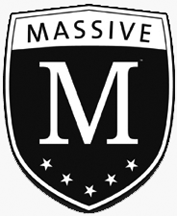On football and soccer fields across the nation, small-business owners are taking advantage of a huge marketing opportunity: sponsoring local sports teams.
Just about every sport, from T-ball played by 5-year-olds to semi-pro baseball or basketball, offers small businesses a chance to get some name recognition and create goodwill in their communities. And the cost is quite small, in many cases a few hundred or a thousand dollars.
Carrie Mitchell has sponsored soccer and T-ball teams, getting the name of her Raleigh, N.C.-based company, ASAP Office Supply, on uniforms and on a sign on a practice field. She has also sponsored a swim team, which meant getting her company's name announced at meets and an ad in a quarterly neighborhood newsletter.
The T-ball team was the one her son played on, and her first thought was to contribute money to help out. But, she said, ``I did think that every one of those kids has parents, and every one of those parents work, and they have to buy their office supplies somewhere.''
A BARGAIN
A sponsorship cost her $350, and it paid off by bringing in business. Mitchell recalls the mother of one of the team members ``saying she was going to tell her company owner about me and our business, and see about getting us their business, and they did.''
``For a $350 investment I got a customer that spends more than that a year,'' she said.
Tom Rizk, who sells office machines to other businesses, has sponsored high school football teams and a semi-pro baseball team in Santa Barbara, Calif.
``I learned very early on when I sponsored a Friday football TV show. . . . The following week I had people walking in the front door,'' said Rizk, owner of Goleta, Calif.-based Coastal Copy.
Fans listening to the Santa Barbara Foresters games on the radio hear Coastal Copy's name mentioned on each broadcast. The company, like other sponsors, also has its own special day during the season, and gets to throw out the first pitch.
The opportunities for sponsorships are numerous, and aren't limited to having a sign posted in a Little League ball field or an ad in a program or newsletter. Anyone who's been to a minor league baseball or hockey game is familiar with local car washes and appliance dealers tossing T-shirts into the stands between innings or during intermissions or offering gift certificates as prizes.
Companies willing to spend a little more can get their names splashed across team uniforms in some leagues, especially in sports like adults' softball. Some communities might shy away from having children's jerseys used as advertising, however.
Dan Maggiani, who owns Payroll Service Solutions in Philadelphia, has sponsored holes in golf tournaments, getting a sign at his team's hole as well as an ad in the tournament program.
GOOD DEEDS
Maggiani says he sponsors a variety of teams and events more out of a desire to do good rather than market his firm. Still, he said, ``it does solidify you in the community. It's like branding.''
He believes his activities do help business, though ``you're not going to know it necessarily.'' Customers might not connect the company with an ad they saw in a program from a Little League game, but they may think, ``I know that company,'' Maggiani said.
Some small companies, because of the nature of their business, are in a position to not just sponsor teams, but to also be actively involved with them.
The New Zealander, a restaurant in the San Francisco Bay area community of Alameda, has sponsored rugby teams and is also sponsoring children's soccer. Manager Chris Watson said the restaurant buys the players' jerseys and warm-up suits and feeds them for free on game days. The New Zealander will also host their end-of-the-season banquet.
``With the economy as it is, restaurants need to do whatever is necessary to drive revenue and get families in the door and also support the community,'' he said.
The team sponsorship, which cost the New Zealander $1,200, brings the restaurant repeat business since players' families come in on nongame days. And, Watson said, in a small place like Alameda, ``word does get out. I think typically people go to places, knowing they support the community.''



